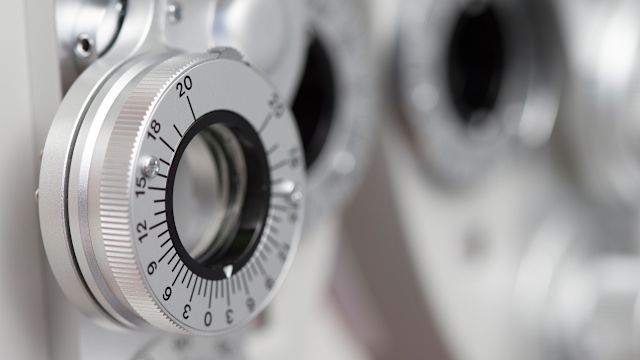Regular vision checkups are important, since many eye diseases have no symptoms. According to the National Institutes of Health:
- Adults older than age 40 should be examined by an eye doctor every 2 to 4 years.
- Adults 55 to 64 should go every 1 to 3 years.
- Adults ages 65 and older should go every 1 or 2 years.
If you're unsure what type you need to see, know that both ophthalmologists and optometrists are qualified to examine your eyes.
If you have any risk factors, you'll need more frequent appointments. People with diabetes, heart disease, high blood pressure and a slow thyroid fall into this group. So do people with a family history of eye disease and members of certain ethnic groups. African-Americans, for instance, have about a five-times-greater risk of glaucoma. People of Asian ethnicity or Japanese descent may be more likely to develop certain types of glaucoma. Long-term steroid use can also raise your risk of eye problems. Contact lense-wearers should also see their doctors every year.
Common eye exams
Here, the four eye tests you’ll get during your checkup—and what to expect.
Dilated pupil exam
Your doctor will place drops in your eyes to widen your pupil. The extra light, along with a special magnifying glass, will allow your doctor to spot evidence of disease, such as diabetic retinopathy, macular degeneration and glaucoma, on the back of your eye. After the exam, your up-close vision may remain blurred for several hours. While some people prefer not to drive with dilated eyes, a recent study showed that distance vision and driving performance are not usually affected. Glare is a bigger problem, since dilated pupils are more sensitive to light—so be sure to bring sunglasses with you.
Tonometry
This eye test measures eye pressure. Higher eye pressure may be a sign of glaucoma, a group of diseases that can damage the optic nerve and result in vision loss and blindness. Your doctor will direct a quick puff of air into your eyes, or gently apply a pressure-sensitive tip to your eye. If you don’t like the idea of something touching your eye, ask your doctor to use numbing drops.
Visual field test
A visual field test measures your peripheral vision, since reduced side vision is a sign of glaucoma. Some doctors may simply ask you to look straight ahead, while presenting objects at various places in your field of vision. Others may use a device called a perimeter.
Visual acuity test
During this test, your doctor will use an chart to measure how well you can see through each eye at various distances. This will help your doctor accurately prescribe corrective lenses and monitor any changes in your vision that could be a sign of vision loss or disease.






